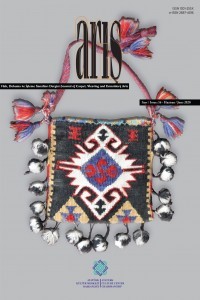
Arış Dergisi
Yazarlar: ["Önder KÜÇÜKERMAN", "Jülide EDİRNE"]
Konular:-
DOI:10.32704/akmbaris.2023.179
Anahtar Kelimeler:Anadolu Halıcılık Kültürü,Kültürel Miras,Sümerbank,Isparta,Sümerhalı Fabrikası,Geleneksel El Halıcılığı,Sümerhalı Üretim Modeli
Özet: In this article, Isparta Carpet Weaving, and the impact of Sümerbank Isparta Factory on modern carpeting tradition and Anatolia hand-woven Carpet Heritage as a school of industry were reviewed. Many personnel were trained in this factory during of its existence then, it acted as a pillar of the local carpeting field by being included in Sümerbank organization in 1935. Traditional carpet production is not only a cultural heritage but also has a very extensive economic value. There are many famous and ancient centers in West Anatolia that keep up the Turkish carpeting tradition. Turkish carpet weaving tradition that has been created in these centers has a place and fame among prominent samples of global carpeting. Isparta that is one of these famous and ancient centers have been oriented to the West through Izmir Port, readily adapted to novelties necessary for new markets and thus reached an important level among centuries-old West Anatolian hand-woven carpet centers by its unique carpet weaving order. By 1987, “Sümerhalı, Sümer Carpet Weaving, Handicraft Industry and Trade Inc.” which was an establishment of Sümerbank became a powerful center of Anatolia hand-woven carpet tradition as an implementer of changing and developing technologies of traditional carpet weaving. In this study, it was seen that Sümerhalı Isparta Factory provided an important model in terms of the maintenance of carpet tradition by initiating a new era of traditional carpet production by an attempt known as the “Development of Turkish Hand-Woven Carpeting” Project. The aim of this article was to discuss the sources of this model, the objectives that enabled the model to be realized and the outcomes. Sümerhalı Isparta Factory maintained its existence as a component of endeavors for industrialization and modernization and developments of the carpet weaving sector in Anatolia until its activity ceased in 2008. It supported Isparta Carpet Weaving’s uniqueness and locality in Anatolia Cultural Heritage and also its economic potential.